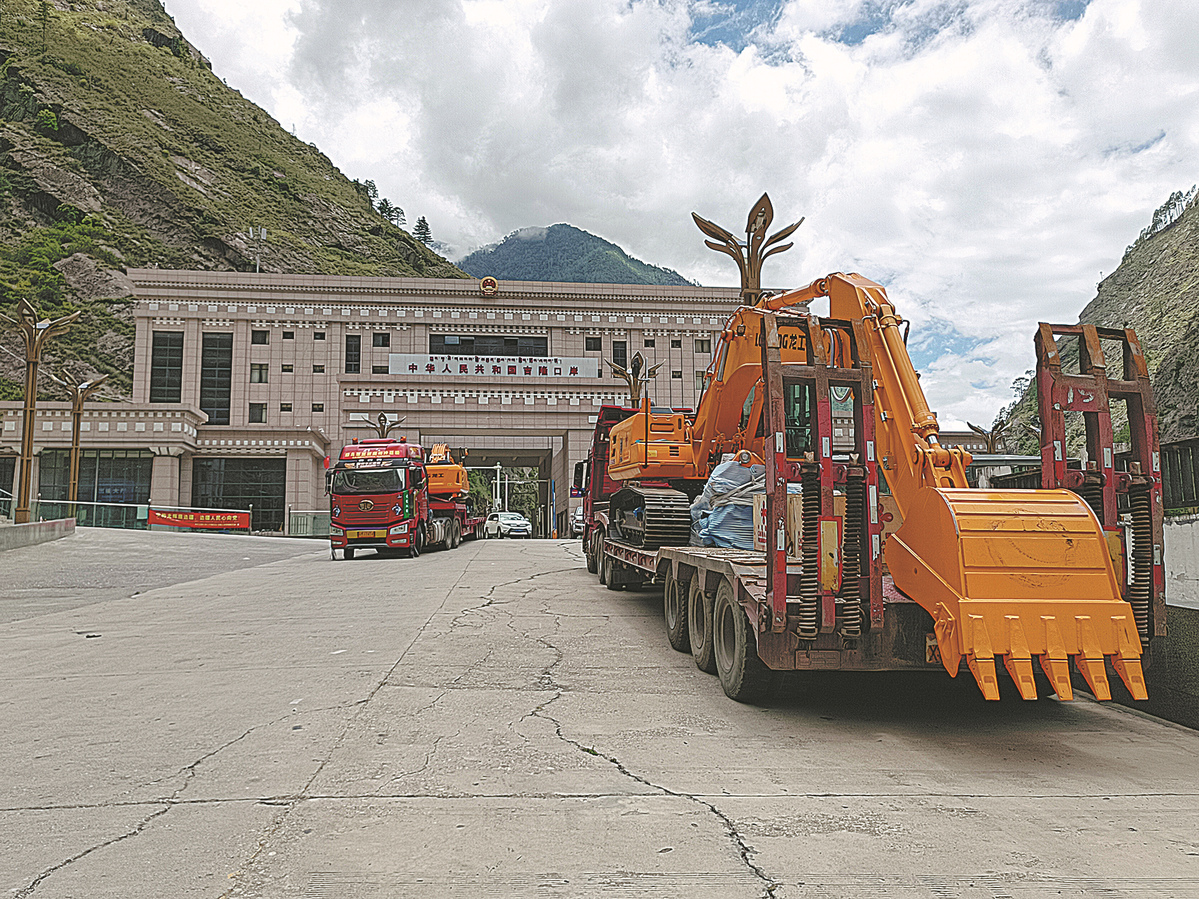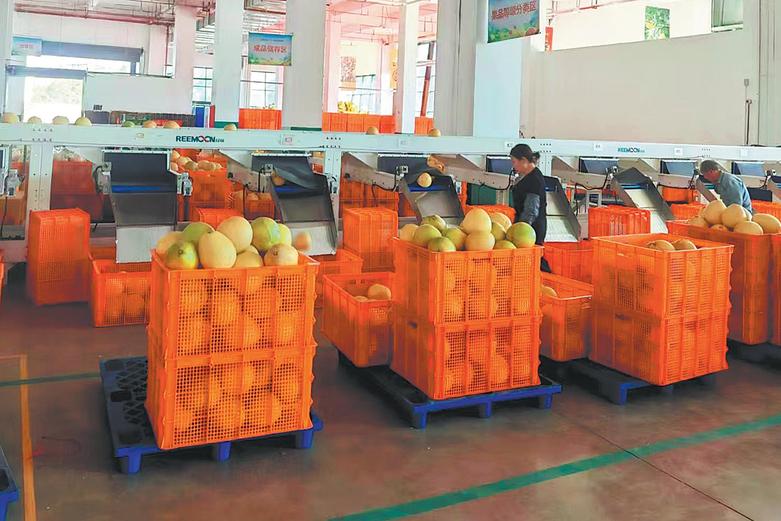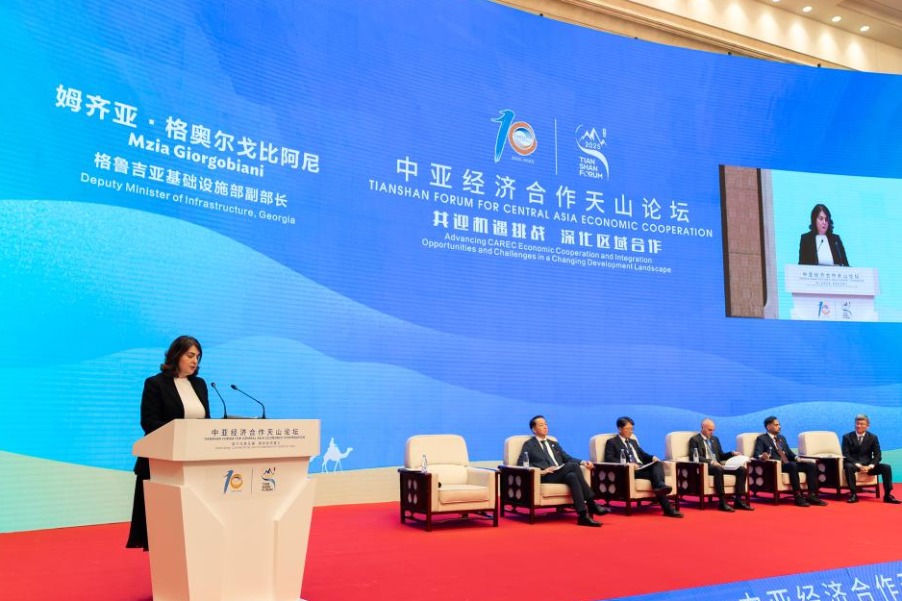Himalayan land port becomes regional success


Born and raised near Gyirong Port, Basang is a beneficiary of the development of one of the largest land ports in the Tibet autonomous region.
Located in the Himalayas, the port is 800 kilometers from the regional capital, Lhasa, and about 130 km from the Nepali capital, Kathmandu.
Gyirong county is sometimes referred to as a "garden" hidden behind Mount Qomolangma, which is known as Mount Everest in English. It is home to primeval forests, snow-capped mountains and numerous glaciers and historical sites.
"The expansion and development of the port has given me the opportunity to expand my foreign trade business and provide more job opportunities to other residents," the 59-year-old Tibetan said.
Basang has been doing border trade business since 2008. He began with a grocery shop in Gyirong township selling Nepali products such as handicrafts and snacks.
"There was not much competition at the time. Although I didn't expect to make much profit, I could make an average net income of 15,000 yuan ($2,200) a year," he said.
In 2014, the Gyirong Port went into full operation, and the road connecting the township with the rest of the county was upgraded. All this helped Basang's business boom.
He started his own foreign trade company, mainly focused on loading and unloading goods on trucks traveling between China and Nepal.
Basang was the first person to open a foreign trade company in the village. The company has grown from four to over 100 and now employs most of the villagers.
"The years between 2015 and 2019 were a golden period for business. I made an average of 130,000 yuan a year," Basang said. "The employees could each earn around 16,000 yuan a year during that period."
Since 2014, more foreign trade companies have been set up-around 60 companies in all-with both local residents and outsiders now engaged in the business.
In Basang's village, eight of the 92 households operate an assortment of businesses, including exports, tourism, retail and transportation.
Despite being dented by COVID-19, business has started to recover recently with more people coming back.
Under the aegis of the Belt and Road Initiative, the government has been working to turn Gyirong into a border economic cooperation zone and a national key exploitation opening-up experiment zone in recent years, according to the Gyirong Port Management Committee.
"We have been working hard to upgrade construction at the port, to promote border trade functions and to accelerate the process of opening-up to the outside world," said Dawa Putri, office director of the committee.
"In recent years, the government has invested nearly 2.7 billion yuan on the construction of the port, including building offices and facilitating inspections, commercial trade and logistics," she added.
According to the office director, the number of cargo trucks cleared for travel to Nepal has increased from three to 14 per day currently.
By the middle of June, some 168 border residents, including about 40 people working as stevedores and about 120 people involved in transportation work, had made a combined income of more than 5 million yuan as a result of the port, Dawa Putri said.
"Since 2020, five border trade cooperatives have been established in Gyirong township, and some 30 border residents operate border trade and transportation companies," she added.
Looking back, the port has undergone stable growth and steady opening-up in the last few years, and proposals to expand opening-up were given national approval in 2017, permitting the opening of the port to third-destination countries in August of that year.
In January 2018, the State Council gave Gyirong Port approval to export Chinese medicinal herbs, and in March, it approved the establishment of the Gyirong border economic cooperation zone.
"Gyirong Port has seen dramatic changes over the last few decades. Border residents now enjoy better livelihoods," Basang said.
"In the 1980s, we suffered from poverty, and eating rice once a week was considered a luxury. Now, we can eat rice and have whatever else we want at any time."
In recent years, subsidies to border residents in the region have been raised several times, and in Basang's village, each villager receives an annual border subsidy of 5,700 yuan.
"Our country has become stronger, and people of different ethnic groups have all been lifted out of poverty," he said.
- Intl students showcasing global business acumen in Shanghai
- CPC expels former senior official of Guangxi
- Shanghai university unveils sustainable, efficient water treatment system
- Fire at auto business park in Jiangsu claims one life
- Magnitude 6.0 earthquake strikes Akqi county in Xinjiang
- Shenzhou XXI team to carry out first spacewalk





































